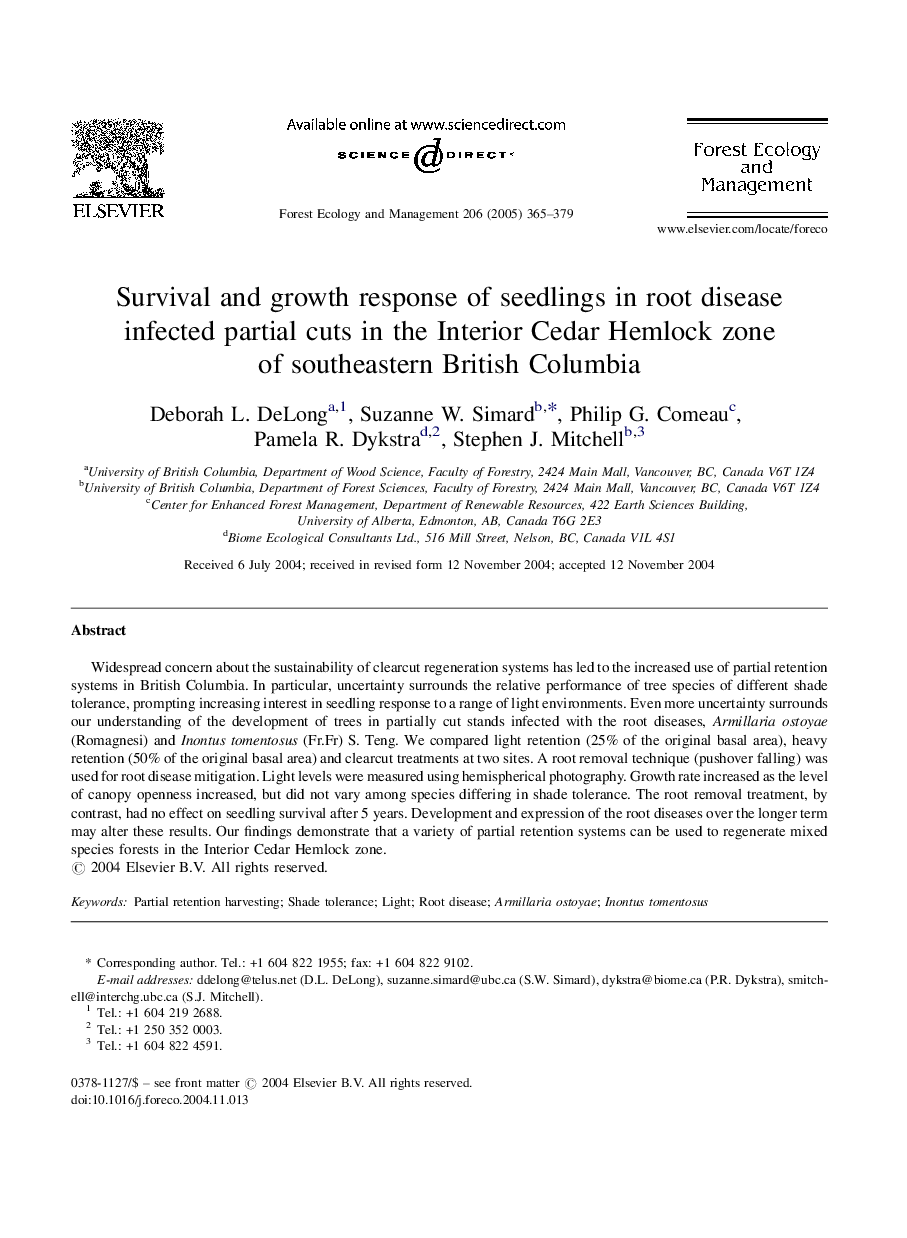| Article ID | Journal | Published Year | Pages | File Type |
|---|---|---|---|---|
| 9620484 | Forest Ecology and Management | 2005 | 15 Pages |
Abstract
Widespread concern about the sustainability of clearcut regeneration systems has led to the increased use of partial retention systems in British Columbia. In particular, uncertainty surrounds the relative performance of tree species of different shade tolerance, prompting increasing interest in seedling response to a range of light environments. Even more uncertainty surrounds our understanding of the development of trees in partially cut stands infected with the root diseases, Armillaria ostoyae (Romagnesi) and Inontus tomentosus (Fr.Fr) S. Teng. We compared light retention (25% of the original basal area), heavy retention (50% of the original basal area) and clearcut treatments at two sites. A root removal technique (pushover falling) was used for root disease mitigation. Light levels were measured using hemispherical photography. Growth rate increased as the level of canopy openness increased, but did not vary among species differing in shade tolerance. The root removal treatment, by contrast, had no effect on seedling survival after 5 years. Development and expression of the root diseases over the longer term may alter these results. Our findings demonstrate that a variety of partial retention systems can be used to regenerate mixed species forests in the Interior Cedar Hemlock zone.
Related Topics
Life Sciences
Agricultural and Biological Sciences
Ecology, Evolution, Behavior and Systematics
Authors
Deborah L. DeLong, Suzanne W. Simard, Philip G. Comeau, Pamela R. Dykstra, Stephen J. Mitchell,
